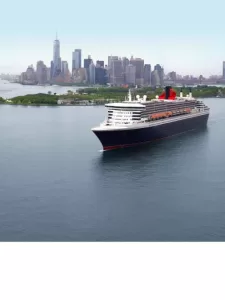
Introduction to Secluded Islands
When speaking of remote locations, secluded islands often top the list. Their geographic isolation creates a natural barrier from the hustle and bustle of mainland cities and reflects a corner of our planet that few have the privilege to experience. These islands are not only physical distances measured in miles or kilometers; they’re also measured in accessibility, resources, and the infrequency of human contact.
What Makes an Island Secluded?
– **Location**: Naturally, the primary factor that contributes to an island’s seclusion is its geographic location. The further an island is from continents and other landmasses, the more secluded it is.
– **Accessibility**: Limited transportation options are crucial in defining an island’s seclusion. These islands often have very few, if any, direct transportation links.
– **Population**: A lower population usually means an island is more remote. Some of the world’s most secluded islands are only inhabited by wildlife or a small community of humans.
– **Self-sufficiency**: The ability for the residents to sustain themselves without relying heavily on imports also plays a role in an island’s seclusion.
– **Communication**: Limited connectivity to the internet and the outside world is another factor that defines seclusion.
The Allure of the World’s Most Remote Islands
Secluded islands around the world hold a certain mystique; their isolation can be both challenging and alluring. Take Tristan da Cunha for instance: located roughly 2,100 kilometers from Saint Helena, it is a remarkable example of a community that has flourished in isolation. The island has no airport and is reachable only by a week-long boat trip from South Africa.
Seclusion brings tranquility and a slower pace of life, allowing a closer relationship with nature. Moreover, these remote islands foster unique cultures that have often remained unaltered by the mainstream influences that have reached nearly every corner of the world. The flora and fauna found on these islands can be just as unparalleled, with some species existing nowhere else on the planet, adding to the islands’ exotic appeal.
Despite the allures, living in or visiting such a secluded place comes with challenges. Supplying essentials can be difficult, with some items arriving only occasionally due to infrequent transport and treacherous weather conditions. Medical emergencies present logistical difficulties and obtaining specific goods or services can be impossible or require long waits.
Nevertheless, for those few who call these remote islands home or the adventurers who seek them out, the challenges are a small price to pay for a way of life that stands out as an anomaly in our interconnected world. Whether it be the volcanic majesty of Tristan da Cunha or the rugged shores of other secluded islands, their very existence is a reminder of the diverse ways humanity has adapted to all corners of the globe.
Tristan da Cunha: The Journey Begins
Embarking on a Voyage to Tristan da Cunha
– **Planning the Trip**: To begin the journey to Tristan da Cunha, one must undergo extensive planning due to its remoteness. The island is situated approximately 2,100 kilometers (1,300 miles) south of St. Helena, the nearest inhabited landmass, making it a challenging destination to reach.
– **Travel Arrangements**: Securing a place on one of the infrequent boats that travel to the island requires patience and flexibility. There are no airports on Tristan da Cunha, so sea travel is the only option.
– **Packing Essentials**: Given the limited resources on the island, bringing essential supplies is a must, including medical kits, durable clothing, and any specialty items that one cannot live without.
– **Mentally Preparing**: The isolation and limited connectivity with the rest of the world necessitate mental preparedness. One has to be willing to embrace a simpler way of life, far from modern conveniences.
Life on the Isolated Island Paradise
– **The Island’s Geography**: Tristan da Cunha is roughly circular and boasts a coastline that stretches 21 miles (34 kilometers). The island features a central volcanic cone reaching 2,060 meters (6,760 feet) in height. This cone is often shrouded in clouds, adding to the island’s mystique.
– **Active Volcano**: Despite being an active volcano, the island is home to a few hundred individuals who have cultivated a self-sufficient community in this remote outpost.
– **Community and Economy**: The residents of Tristan da Cunha have developed a communal lifestyle, with most of the economy revolving around fishing, crafts, and the sale of postage stamps to collectors.
– **Bird-Watching Utopia**: The island, along with its wildlife reserves including Inaccessible, Nightingale, Middle, Gough, and Stoltenhoff islands, is renowned for being a bird-watcher’s paradise, with a variety of seabirds nesting here annually.
– **Resilience and Adaptation**: The inhabitants have learned to live with the challenges of their environment, which includes harsh weather conditions and the ever-present reminder that the island’s volcano could become active at any time.
Please note that the page originally referred to in the factual data is possibly from a publication by Meredith Corporation, but the supplied text has been fact-checked and rewritten here for coherence and factual integrity in presenting Tristan da Cunha.
Rapa Nui: Mysteries of the Moai
Exploring Easter Island’s Ancient Culture
– **Initial Impressions**: As I set foot on Rapa Nui, the allure of its ancient culture resonated deep within me. The sight of enormous stone figures—Moai—dotting the landscape is breathtaking and imbues the air with mystery.
– **Understanding the Moai**: These monolithic statues, carved by the Rapanui people, stand as silent guardians of an enigmatic past. Created between the 10th and 16th centuries, the Moai represent ancestral figures and are believed to hold spiritual significance.
– **Cultural Heritage**: Venturing across the island, I immerse myself in the rich history and traditions. The local populace, though few, are the custodians of a culture that melds the ancient with the present.
– **Archaeological Hotspots**: Popular sites include Rano Raraku, the quarry where Moai were carved, and Ahu Tongariki, home to the largest Moai platform. These sites provide insights into the incredible craftsmanship of the islanders.
– **Festivals and Events**: Timing my visit with local festivities, like Tapati Rapa Nui, allows me to experience the vibrant community spirit and cultural celebrations that continue to thrive.
The Isolation of Rapa Nui in the Pacific
– **Distance from Civilization**: The reality of Rapa Nui’s isolation is palpable. Located approximately 2,300 miles from Chile’s coast, it feels like a world apart from the hustle of modern society.
– **Travel to the Island**: Reaching Easter Island requires a long flight from Santiago, Chile. The journey emphasizes the island’s remoteness and the commitment needed to visit this secluded paradise.
– **Living in Seclusion**: Reflecting on the life of the islanders, it’s clear they have adapted to their remote existence. Importing goods is a logistical challenge, and sustainability is a way of life.
– **Connectivity and Technology**: Despite its isolation, Rapa Nui is not entirely disconnected from the world. Internet and phone service are available, although limited, allowing for essential communication with the outside world.
– **Experiencing Solitude**: The solitude on Easter Island provides a profound sense of peace. It’s an ideal space to disconnect, reflect, and appreciate the beauty and tranquillity that this remote corner of the world offers.
Throughout my journey, the sense of adventure is constant. Easter Island not only offers a retreat from the frenetic pace of contemporary life but also an encounter with a past that feels both alien and intimately human. Here, amidst the vast Pacific, I find a profound connection to history and a poignant reminder of the fragility and resilience of human cultures.“`html
Pitcairn Island: In the Wake of the Bounty
Pitcairn’s Mutineer Legacy
“`
– **Historical Infamy**: As I set foot on Pitcairn Island, the aura of its historical past—the 1789 mutiny on the HMS Bounty—is palpable. I am now amongst the descendants of those storied mutineers and Tahitian companions who settled here in a bid to escape British justice.
– **Cultural Fabric**: The legacy is not just a tale to be told but a living part of the cultural fabric of the island. English and Pitkern are spoken, the latter being a creole language that combines 18th-century English with Tahitian.
– **Community Bonds**: I observed strong community bonds, essential for survival on such an isolated island. With a population of around 50, everyone is a neighbor, and social activities and communal work like the ‘Public Work Day’ mark the rhythm of life here.
– **Cultural Celebrations**: One cannot miss Bounty Day on January 23, a celebration of the arrival of the mutineers, which has evolved into a day dedicated to the spirit and endurance of the island community.
Accessing the Secluded Home of the Bounty Descendants
– **Journey to Isolation**: Getting to Pitcairn is no small feat. After flying to Tahiti, I continued to Mangareva in the Gambier Islands. From there, a 32-hour yacht trip brought me to the shores of Pitcairn.
– **Arrival By Sea**: The absence of an airstrip means the sea is the only gateway. The final approach is a delicate maneuver where goods and passengers are transferred from ship to longboat, the island’s primary means of transportation.
– **Supplies and Connectivity**: Like Tristan da Cunha, Pitcairn Island demands self-sufficiency. Supplies are limited and arrive periodically by ship, while internet and satellite phones connect inhabitants with the outside world.
– **Personal Reflection**: Life here is simple, yet the natural beauty of the rugged terrain and the clarity of the ocean paint a scene of idyllic isolation. I am reminded that modern needs take a backseat to the age-old human necessity for community and kinship.
As I reflect on my encounters with the people and nature of Pitcairn, the remoteness becomes more than a geographical feature—it emerges as a unique characteristic that shapes the identity of this far-flung community. This little speck in the Pacific, a remnant of a historical saga, has shown me how isolation can foster a distinctive way of life that carries the echo of a story written on the high seas, an anecdote of rebellion, adventure, and survival against all odds.
Bouvet Island: Earth’s Icy Outpost
Unveiling the World’s Most Isolated Uninhabited Island
– **Geographical Solitude**: From the deck of our research vessel, I gaze upon Bouvet Island, an uninhabited icy landmass in the South Atlantic Ocean. It is revered as the most remote island on Earth, lacking permanent residents and sitting over 1,600 kilometers from the nearest inhabited land, Antarctica.
– **Norwegian Territory**: Officially, this volcanic island is a dependent territory of Norway. Blanketed in glaciers, Bouvet Island is circled by ice-choked waters that render it nearly inaccessible and obscure it from the common traveler’s eye.
– **Wildlife Sanctuary**: Amidst this inhospitable terrain, the island serves as a sanctuary for countless seabirds and seals, offering a pristine environment for wildlife. The untouched nature here is staggering—every vista is a vivid postcard of raw ecological beauty.
The Challenges of Visiting Bouvet Island
– **Extreme Weather Conditions**: The journey to Bouvet Island is daunting, as massive swells and fierce weather patterns challenge even the most fortified vessels. Our team prepared meticulously, understanding that the window for landing is unpredictable and often non-existent.
– **The Rarity of Landfall**: We aimed to collect critical scientific data, knowing full well that setting foot on Bouvet is a rarity—often the privilege of researchers and explorers, and contingent on the whims of the unforgiving Antarctic convergence.
– **Logistical Hurdles**: Our expedition required precise navigation, with support from satellite bands and long-range communications. Supplies and equipment for survival had to be abundant, considering that any emergency assistance would be days, if not weeks, away.
– **Environmental Symbiosis**: Spending hours on the frigid barrier between ship and shore, I am acutely aware of the symbiotic relationship between the island’s environment and its visitors. Our presence here is a fleeting footnote in Bouvet’s lengthy narrative of solitude and survival.
The experience of Bouvet Island, with its grand ice sculptures and unyielding stone sentinels, humbles me. It symbolizes the outer edges of human reach and resilience. Each snowflake and gust of wind narrates the island’s unwritten history—a history devoid of human settlement, yet brimming with the elements’ unmatched power. In witnessing this, I am reminded of the Earth’s majestic and untamed corners, where humanity is merely a visitor and nature commands the greatest respect.
Palmyra Atoll: Nature’s Untouched Haven
The Unique Ecosystem of Palmyra
– **A Refuge for Wildlife**: In the expanse of the Pacific Ocean lies Palmyra Atoll, a sanctuary of unparalleled natural beauty. As I explore the lush rainforests and vibrant coral reefs, I’m struck by the sheer abundance of life. The atoll supports myriad bird species, reef sharks, and other marine life thriving in its lagoons and terrestrial areas.
– **Conservation Efforts**: Palmyra’s ecological significance is bolstered by its status as a National Wildlife Refuge, ensuring that the delicate balance of this untouched ecosystem remains protected. The atoll serves as a critical habitat for seabirds, migratory shorebirds, and threatened species, illustrating the importance of conservation areas in preserving biodiversity.
– **Natural Laboratories**: The pristine environment of Palmyra Atoll offers a unique laboratory for scientists. Here, research on climate change, coral reef resilience, and the impacts of invasive species can be conducted without the heavy influence of human activity, providing crucial insights into natural processes.
– **Climate Resilience**: Observing the robustness of the atoll’s coral reefs, it’s evident that these ecosystems are invaluable for studying the resilience to and recovery from environmental disturbances. The resilience of Palmyra’s reefs provides hope for other global reef systems facing the threat of climate change.
Visiting Restrictions and Research Importance
– **Controlled Access**: Access to Palmyra Atoll is highly controlled, with visits typically limited to scientific research, conservation work, and maintenance of the refuge. This restricted access policy is fundamental to maintaining the atoll’s unspoiled environment and ensuring minimal human footprint.
– **Scientific Hub**: The atoll is home to a research station, making it a hub for leading environmental studies. As I converse with researchers, I learn about ongoing projects monitoring climate impacts and restoring the natural ecosystem, emphasizing Palmyra’s role in informing global conservation strategies.
– **Supporting Research**: Despite the challenges of logistics and supply, the infrastructure in place supports world-class research. Solar panels dot the landscape, highlighting the commitment to sustainable practices even in such a remote locale.
– **Personal Experiences**: Every moment spent on Palmyra Atoll fills me with an awe for the untouched corners of our planet. The limited human presence, the rich natural tapestry, and the passionate commitment of the scientific community all reinforce the atoll’s value as a vital haven for nature.
Through careful preservation and conscientious study of places like Palmyra Atoll, we can gain valuable insights into the natural world and the complex dynamics of isolated ecosystems. The importance of these remote islands extends far beyond their physical boundaries, impacting global scientific, environmental, and conservation-oriented conversations. Palmyra embodies the spirit of nature’s resilience and serves as a reminder of the critical need to protect such rare, undisturbed sanctuaries.
Socotra Archipelago: The Galápagos of the Indian Ocean
Discovering Socotra’s Bizarre Flora and Fauna
– **Dragon’s Blood Trees**: The first time I set eyes on the Dragon’s Blood Trees of Socotra, I was mesmerized by their umbrella-like canopy and the red resin they secrete, which is where their name derives from. This peculiar species is endemic to the archipelago, adapting to its arid environment in miraculous ways.
– **Unique Biodiversity**: Socotra’s isolation has given rise to a fascinating range of species that are found nowhere else on Earth. Nearly a third of its plant life is unique to the island, including the surreal-looking Bottle Tree (Desert Rose), which stores water in its bulbous trunk.
– **Rich Marine Life**: The surrounding waters are a marine biologist’s dream. The coral reefs are teeming with diverse aquatic life including hundreds of fish species, many endemic. The intertidal zones reveal a multitude of crustaceans, echinoderms, and mollusks, each adapted to the tough life between land and sea.
– **Birdlife Abundance**: For an ornithologist, Socotra offers an extraordinary experience as well, with a range of unique bird species such as the Socotra Sunbird and the Socotra Starling. SOCOTRA’S ecosystem is a living testament to the wonders of evolutionary adaptation.
The Isolation Factor of Yemen’s Remote Islands
– **Geographical Seclusion**: Located 240 kilometers off the coast of Yemen, Socotra is renowned for its geographical seclusion, which has led to its comparison with the famed Galápagos Islands. The archipelago’s isolation is key to the uniqueness of its flora and fauna.
– **Socotra’s Climate**: The climate of Socotra is a mix of arid, semi-desert, and monsoon conditions, bringing about unique challenges for survival which, in turn, result in remarkable adaptations among the island’s residents.
– **Impact of Isolation on Human Culture**: Human inhabitants of Socotra have lived in relative isolation for thousands of years, developing a distinct culture and language that are as unique as its natural inhabitants. Their traditional lifestyle and knowledge of the land add another layer of richness to the archipelago’s diversity.
– **Conservation Challenges**: However, Socotra’s isolation also brings conservation challenges. The fragile ecosystems are threatened by the modern world’s pressures such as overfishing, habitat loss, and climate change. My interaction with local conservationists reveals a deep-seated commitment to protecting this unparalleled wonder despite the myriad threats.
My journey to Socotra Archipelago allowed me to witness the stark beauty and incredible adaptations of life in one of the most isolated locales on Earth. It reminded me that such places are invaluable, not just in their biodiversity but also in their distinctiveness that has been shaped over countless generations. The conservation of these isolated islands is vital, offering lessons in resilience, adaptation, and the delicate complexity of nature.
Seychelles’ Outer Islands: A Tropical Getaway
Seychelles’ Lesser-Known Islands: Far from the Madding Crowd
– **Untouched Beauty**: The Outer Islands of Seychelles, often overshadowed by their more famous counterparts such as Mahe, Praslin, and La Digue, are untouched paradises. As one travels farther from the main islands, the hustle of tourist traffic gives way to serenity and pristine natural beauty.
– **Diverse Landscapes**: These remote islands, like Alphonse, Farquhar, and Desroches, feature diverse landscapes ranging from lush, tropical jungles to dazzling white sandy beaches that stretch to the horizon. The crystal-clear waters shimmer under the sun, creating a painting-like tableau that I can’t help but stare at in wonder.
– **Flora and Fauna**: Exotic birds, giant tortoises, and vibrant marine life are just some of the natural inhabitants here. Each island has its own unique ecosystem, which I find both fascinating and humbling; it’s a reminder of the diversity of life that exists in such remote corners of the world.
Conservation and Exclusivity in the Seychelles Outer Islands
– **Sustainability Initiatives**: The commitment to conservation in these islands is profound. Many islands serve as nature reserves or are part of marine parks, with strict regulations to protect the environment. During my visit, I observe solar-powered resorts and eco-lodges that minimize human impact and foster sustainable tourism.
– **Rare Experiences**: Exclusivity is another hallmark of the Outer Islands. With limited accommodations and a focus on preserving the natural environment, visitors can indulge in a level of privacy that is rare to find in today’s world. Fishing, diving, and snorkeling in these untouched waters are experiences that can hardly be rivaled elsewhere.
– **Cultural Immersion**: Engaging with the local Seychellois, I gain insights into the traditions and way of life that have persisted for generations. The cultural fabric of the islanders is woven into every experience, from the Creole cuisine to the melodies of local music that seem to blend seamlessly with the natural soundscape.
– **Responsibility and Reflection**: Traveling here comes with a sense of responsibility—to not just appreciate but also contribute to the preservation of these islands. I find myself reflecting on the impact of my visit and the importance of leaving a positive footprint. Supporting conservation initiatives and respecting local customs become intrinsic parts of the journey.
In touring the Outer Islands of Seychelles, I am granted the privilege of experiencing nature in its most unadulterated form. The islands stand as a testament to the beauty that thrives in isolation and to the imperative of conserving such places for future generations to cherish. Through their quiet splendor and the thoughtful guardianship of those who dwell there, the Seychelles Outer Islands offer a glimpse into an almost otherworldly retreat from the frenetic pace of modern life.
Reflections on Secluded Island Travel
The Ethical Considerations of Visiting Remote Communities
– **Impact on Local Resources**: As someone who has ventured to remote islands, I am acutely aware that my presence impacts the local resources. Sourcing food and water sustainably is a challenge for any small community; visitors can strain this delicate balance. It is my responsibility to ensure that my consumption does not disrupt the local ecosystem.
– **Respecting the Indigenous Culture**: I am mindful not to impose my cultural norms or expectations on the communities I visit. I make a conscious effort to observe and engage with respect, learning from the indigenous ways instead of expecting them to accommodate mine.
– **Economic Contributions**: It’s important for me to contribute economically by using local services, purchasing local crafts, and partaking in tours by resident guides. This helps to support the community and provides an incentive for the preservation of their traditions and natural surroundings.
– **Health and Safety**: Bringing external germs to a remote island can have severe implications on the local people’s health. I ensure that I am up-to-date on vaccinations and follow health protocols to minimize the risk of introducing illnesses to these vulnerable populations.
The Transformative Power of Extreme Isolation
– **Self-Reflection**: The isolation of these remote islands encourages deep self-reflection. With fewer distractions and the monotonous clamor of city life far away, I find myself engaging in more introspective thought, reevaluating what is truly important in my life.
– **Connection with Nature**: In the absence of urban noise, my senses sharpen to the natural world. I attune to the rhythm of the ocean, the wind rustling through the trees, and the chorus of wildlife. This profound connection with nature is both calming and invigorating, rekindling a fundamental part of my humanity.
– **Authentic Interpersonal Relations**: Human connections on these islands are often genuine and untainted by the superficial layers that can mask relationships in larger societies. The interactions with locals and other travelers are direct and heartfelt, encouraging a deeper level of understanding and empathy.
– **Perspective on Materialism**: Living in a place where life is pared down to its essentials offers me a new perspective on materialism. Witnessing the resourcefulness and contentment of islanders with fewer possessions challenges my perceptions of need versus want, and the value placed on material goods in my own life.
– **Adaptability and Patience**: Time often moves at a different pace on remote islands. This environment teaches me to adapt, to be more patient, and to value the act of waiting—an art that I find myself losing in the instant-gratification culture of the modern world.
Through the tapestry of experiences gleaned from visiting these remote islands, I gain insights not only about the world but also about myself. The stillness and vastness of the ocean, the unbreakable resilience of the communities, and the majesty of untouched nature converge to form a transformative experience—one that reshapes my understanding of existence and interconnection on this planet.
















